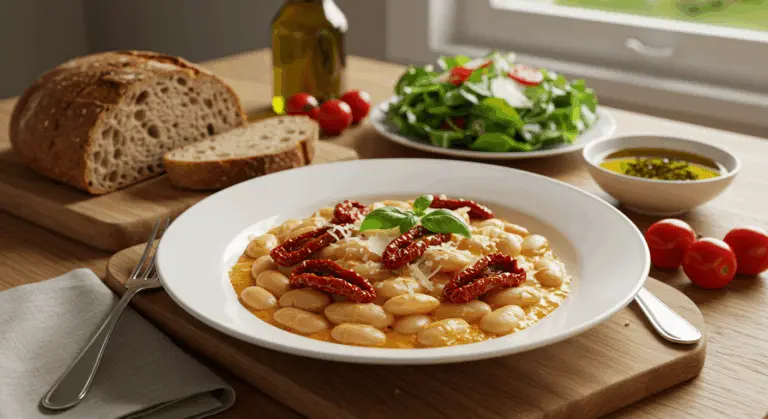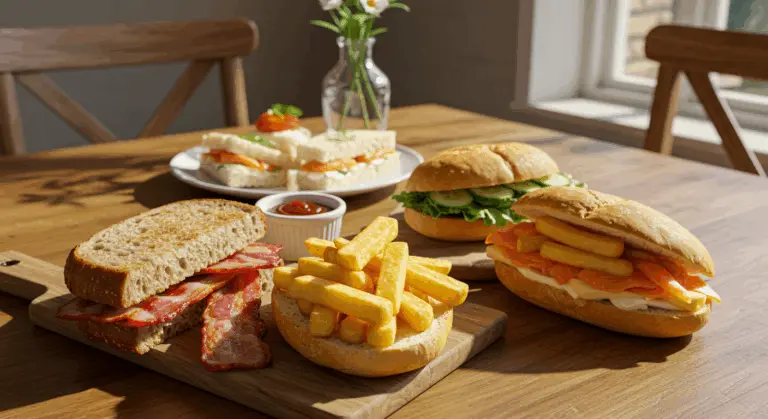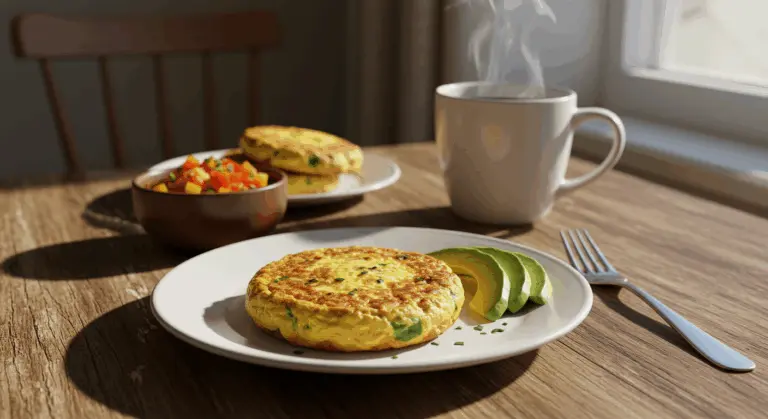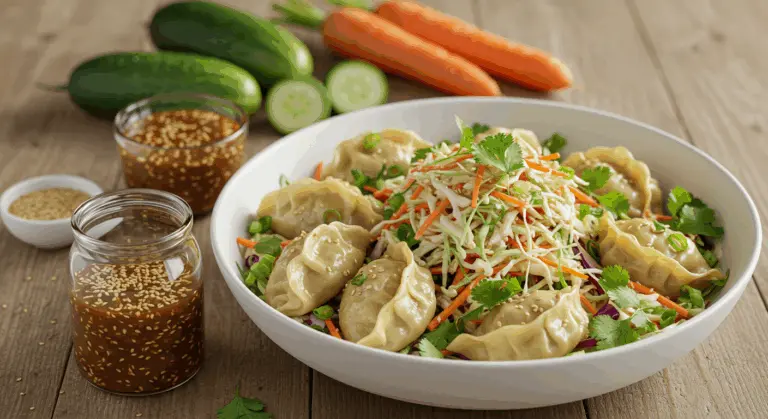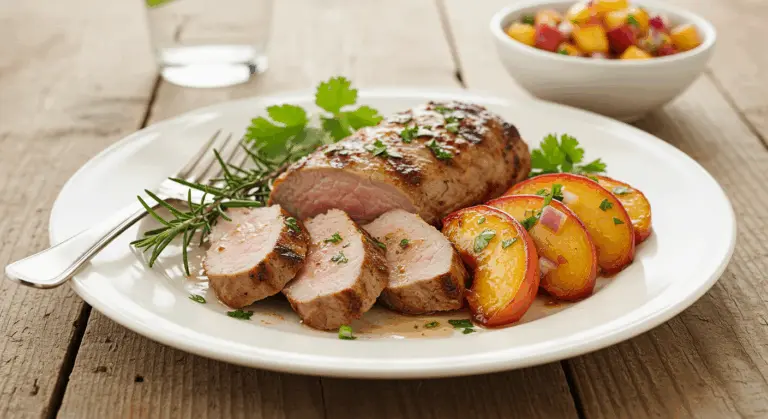Ratatouille Lasagna – A Delicious Layered Recipe
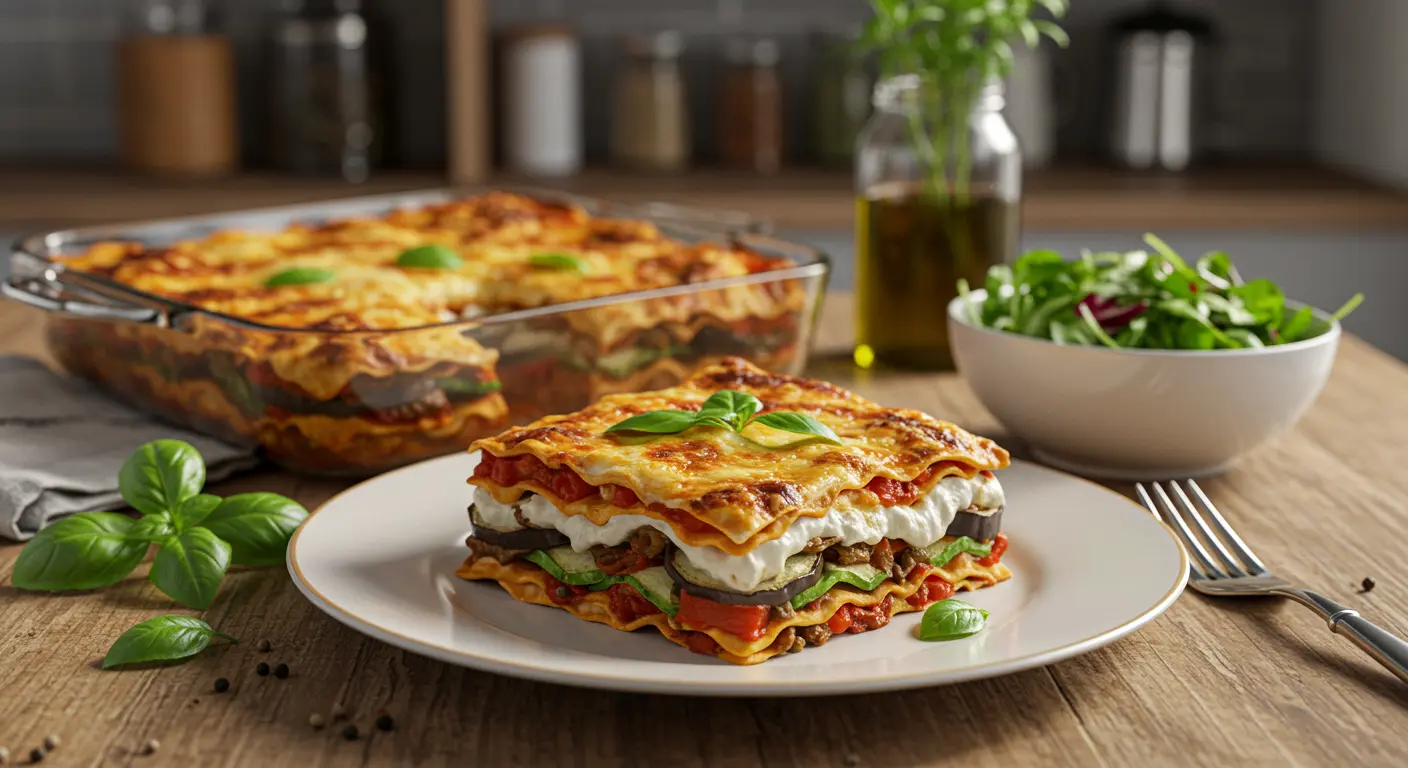
What is Ratatouille Lasagna?
Ratatouille Lasagna represents a creative culinary fusion—one that combines the beloved layered structure of Italian lasagna with the rustic charm of ratatouille, that quintessential French medley of eggplant, zucchini, bell peppers, and sun-ripened tomatoes.
This dish brings together two cherished Mediterranean traditions. Lasagna anchors the experience with its comforting pasta foundation. Meanwhile, ratatouille brings vibrant, vegetable-forward sophistication to every forkful.
What makes this dish special? Its wonderful accessibility. Unfussy yet elegant, simple to prepare yet impressively sophisticated—it’s family-friendly without sacrificing refinement.
Key Ingredients for Ratatouille Lasagna
Exceptional ingredients form the foundation of this dish. The main components are:
Vegetable Base (Ratatouille)
-
Eggplant: Provides a meaty texture.
-
Zucchini: Adds tenderness.
-
Bell Peppers: For color and sweetness.
-
Onion & Garlic: Aromatic foundation.Cheese Layers
-
Mozzarella: For its classic melting quality.
-
Parmesan: Adds a nutty, savory depth.
-
Ricotta or Mascarpone: Creates a creamy texture.Sauce and Structure
-
Tomato Sauce: A robust, herb-seasoned sauce (with basil, oregano, thyme) binds the dish.
-
Lasagna Noodles: Provide the traditional structure.
-
Optional Seasonings: Red pepper flakes or bay leaves can add complexity.
Step-by-Step Preparation Guide
Start by preparing your vegetables carefully. Slice the eggplant, zucchini, and bell peppers into uniform pieces—consistency here ensures even cooking throughout.
While your vegetables cool, turn your attention to the tomato sauce. Gently simmer crushed tomatoes with aromatic herbs—basil, oregano, and a single bay leaf work beautifully here.
Now for assembly Begin by spreading a thin layer of sauce across the bottom of your deep baking dish. Layer in your first sheet of lasagna noodles, followed by the sautéed ratatouille vegetables.
Cover with foil Covering your dish before baking ensures even cooking and prevents that top layer of cheese from burning before the interior reaches perfection.
Cooking Time and Temperature
Preheat your oven to 375°F (190°C). Place the covered dish on the middle rack and let it bake for about 45 minutes.
Next, remove the foil, increase the temperature to 400°F (200°C), and bake for another 15–20 minutes. The cheese will turn golden and crispy on top.
The most challenging step is waiting. Let your lasagna rest for at least 15 minutes after removing it from the oven.
Variations and Customizations
This dish offers many customization options. Seeking a gluten-free alternative? Swap traditional noodles for gluten-free pasta or—as an alternative—thinly sliced zucchini ribbons.
For cheese variations, Try incorporating tangy goat cheese—it complements roasted vegetables. Going dairy-free?
Let the seasons guide your creativity. Summer calls for heirloom tomatoes and sunny yellow squash. When autumn arrives, consider roasted butternut squash or sweet potatoes for deeper, earthier notes.
For meat lovers, A layer of browned Italian sausage or ground turkey transforms this into a heartier affair. For vegetarians, sautéed mushrooms provide a satisfying meaty texture while keeping things plant-based.
Serving Suggestions
A crisp green salad dressed in bright lemon vinaigrette provides the perfect counterpoint to this rich lasagna—the bright acidity balances the rich flavors perfectly.
Good bread makes an excellent accompaniment. A crusty baguette becomes the perfect vehicle for soaking up every drop of the flavorful sauce.
Thoughtful pairings can enhance the meal:
-
Red Wine: Light to medium-bodied options with good acidity, such as Pinot Noir, Chianti, or Sangiovese.
-
White/Rosé Wine: A dry rosé stands up to the richness while offering refreshing fruit notes.
-
Non-Alcoholic: Sparkling water with lemon or a light iced tea with herbs.
For a complete Mediterranean-inspired spread, consider adding a simple side of additional roasted vegetables like asparagus or Brussels sprouts, or a small plate of marinated olives and artichokes. These sides create a balanced, vegetable-forward meal.
Nutritional Information
A typical serving (roughly 1/8th of the recipe) clocks in at 375-450 calories—quite reasonable for such a satisfying dish. Here’s how the macronutrients break down:
The abundant vegetable content delivers impressive nutritional benefits: significant dietary fiber, essential vitamins A and C, potassium, and powerful antioxidants.
While the cheese components contribute fat, they also provide crucial calcium and protein. Watching your sodium or fat intake?
Compared to traditional meat lasagna, this version typically contains fewer calories and less saturated fat while boasting higher fiber and micronutrient content.
Tips for Perfect Ratatouille Lasagna
Start with high-quality ingredients. Seek out in-season vegetables for the best flavor. Choose firm, glossy eggplant and medium-sized zucchini—larger ones tend toward wateriness.
Texture is important. Salt your eggplant for 30 minutes before cooking to draw out excess moisture—this simple step prevents sogginess later.
Layer thoughtfully. Begin and end with sauce to prevent dryness, but exercise restraint—vegetables release additional moisture during baking.
Save approximately one-third of your cheese for the top layer—this ensures the golden, crispy top layer.

